Tricia Goyer's Blog, page 19
February 20, 2025
Writer’s Desk with Sarah Sundin
 Writer’s Desk with Sarah Sundin
Writer’s Desk with Sarah SundinSarah Sundin is a bestselling author of World War II novels, including Midnight on the Scottish Shore and Embers in the London Sky. Her novel Until Leaves Fall in Paris received the 2022 Christy Award, The Sound of Light, When Twilight Breaks and The Land Beneath Us were Christy Award finalists, and The Sky Above Us received the Carol Award. A mother of three adult children, Sarah lives in Southern California, where she and her husband traipse the trails with their rescue dogs. Sarah teaches Sunday school and women’s Bible studies, and she enjoys speaking for church, community, and writers’ groups. She serves as program director for the West Coast Christian Writers Conference.
Connect with Sarah on her website, Facebook, Instagram, X, and Bookbub, and subscribe to her newsletter.
More about Midnight on the Scottish ShoreIn a time of war, danger lurks beneath the water–and in the depths of the human heart
As the German war machine devours the Netherlands, the only way Cilla van der Zee can survive the occupation is to do the unthinkable–train to become a spy for the Nazis. Once dispatched to Britain, she plans to abandon her mission and instead aid the Allies. But her scheme is thwarted when naval officer Lt. Lachlan Mackenzie finds her along the Scottish shore and turns her in to be executed.
Yet perhaps she is more useful alive than dead. British intelligence employs her to radio misleading messages to Germany from the lighthouse at Dunnet Head in Scotland–messages filled with naval intelligence Lachlan must provide. If the war is to be won, Lachlan and Cilla must work together. But how can he trust a woman who arrived on his shores as a tool of the enemy–a woman certain to betray both him and the Allied cause?
Purchase a copy of Midnight on the Scottish Shore.
Enter to Win One of Five Signed Paperbacks a Rafflecopter giveawayQ&A with Sarah Sundin
a Rafflecopter giveawayQ&A with Sarah SundinARCF: Sarah, we are so excited to be featuring you and your newest book over the next week! Can you share a little bit about Midnight on the Scottish Shore and the inspiration behind it?
SS: A member of the Dutch resistance, Cilla van der Zee finds herself in trouble and desperate to escape the Netherlands. When she learns the Germans are recruiting spies to go to Britain, she leaps at the chance, planning to slip away from German sight as soon as she lands. Her plans go awry when naval officer Lt. Lachlan Mackenzie finds her along the Scottish shore and turns her in, knowing she’ll be executed. But Britain’s MI5 offers a chance to save her life—to become a double agent and send misleading messages to Germany. She works on these messages from her station at Dunnet Head Lighthouse in Scotland…with the help of Lachlan, who is far from willing.
This story was inspired by my husband’s request for a Scottish World War II book, by my youngest son’s suggestion of using the Scottish legend of the selkie, and by my parents’ love of lighthouses.
ARCF: What was the most interesting piece of research you discovered while researching for Midnight on the Scottish Shore?
SS: Since this is my first novel with an espionage angle and my first set in Scotland, I found so many interesting facts. First, the story of “Mutt and Jeff” intrigued me. These two Norwegian men landed in Scotland as spies but became double agents—and MI5 used them to commit fake sabotage! Second, on my research trip we visited the Ring of Brodgar in the Orkneys near Scapa Flow, a “henge” similar to Stonehenge. The visitor center displays a photo of British tanks on maneuvers around these neolithic stones! Appalling, yet kind of amusing. Since it happened during the timeframe of my novel, I included those tank tracks.
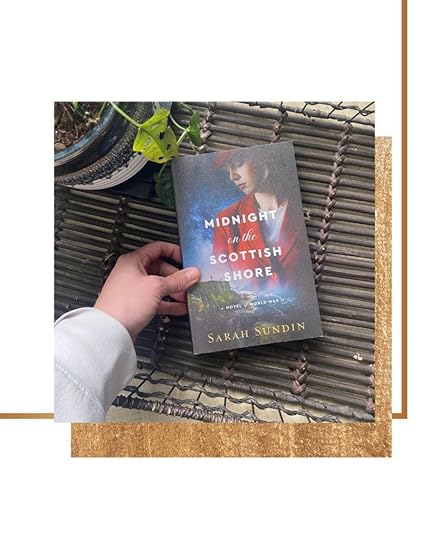
ARCF: Were there any bits of research that didn’t make it into the novel?
SS: Always! Since MI5’s Double Cross program was top secret and Cilla and Lachlan were only allowed to know a minimum, I wasn’t able to include the fascinating and incredible stories of the three dozen or so double agents employed by MI5 during the war. And because of the timeframe of the novel, I wasn’t able to share about the amazing work they did leading up to D-day, how the double agents played a significant role in convincing the Germans that the invasion would come in the Pas de Calais region rather than Normandy.
ARCF: Your books are set during WWII — are there any other genres or time periods you’d love to explore in a future novel?
SS: I absolutely love reading a variety of genres and about a variety of eras—but I don’t see myself as writing anything but WWII in the near future. It takes a long time to build a foundation of research for a new era, and the thought of that kind of exhausts me. Also, WWII fiction remains popular and most importantly, I love writing about the era!
ARCF: What does a typical writing day look like for you?
SS: I am not a morning person, so I start with breakfast, emails, and social media. Then after my morning walk—the dogs demand it!—and my quiet time, I do business work for the rest of the morning. That includes publicity, communications, and other non-creative stuff. Over lunch, I read research books. Then in the afternoon—my best time of the day—I write. This includes outlining, drafting, and editing. It’s so important for writers to find their most-creative time of the day and reserve it for writing.
ARCF: We’ve had some great questions from our Facebook community! Mary asks, what does your research involve? How do you decide on a subject for that particular point in history?
SS: For each new story, I start with broad research then narrow it down, following the story. For Midnight on the Scottish Shore, I researched life in Scotland in WWII, MI5 and the Double Cross program, Scapa Flow (the base of Britain’s Home Fleet in WWII), Scottish lighthouses, and many other things. Research involves reading books, finding reputable websites, and consulting experts. My favorite part of research is visiting the location. For this book, I was blessed to be able to visit northern Scotland and the Orkney Islands—and even take a ferry across Scapa Flow!
New story ideas for me often come from research. I read something that intrigues me, and I think it will intrigue my readers too. But those bits of research don’t come alive until I see the characters who will inhabit that story. Once that happens, I know I have a story. At this point in my career, I have discussions with my agent and editor about these ideas and any direction they have for me.
ARCF: Abby asks, what is your writing process?
SS: I am an outliner, meaning I get to know my characters and story very well before I start my rough draft. In the outlining phase, I fill out character questionnaires and plot charts and other nerdy things. I have multiple steps, and in each step, my story builds. For me, the rough draft goes pretty quickly and editing is fairly smooth, mostly making changes due to research—which is ongoing through the year. There isn’t a right or wrong way to write a novel—but this is the right way for me.
ARCF: Becky asks, what thoughts/steps do you have to take to keep your stories fresh?
SS: This wasn’t an issue when I was first published and only a few of us were writing about World War II. But now it’s extremely popular, so I deliberately look for fresh angles—but fresh angles that will still be fascinating to readers. Those fresh angles can come from setting (like Scotland) or character (like a Dutch refugee/MI5 double agent).
ARCF: Thank you so much for joining us here today, Sarah! Can you share what you have coming up next?
SS: I’m so excited about this story. It’s set in Jersey in the Nazi-occupied British Channel Islands, Dr. Ivy Picot risks her life to treat men who have escaped from the German forced labor camps in her native Jersey. But when Dutch engineer Gerrit van der Zee sneaks maps of fortifications off the island, it could cost them both everything they love.
Save, Pin, Share
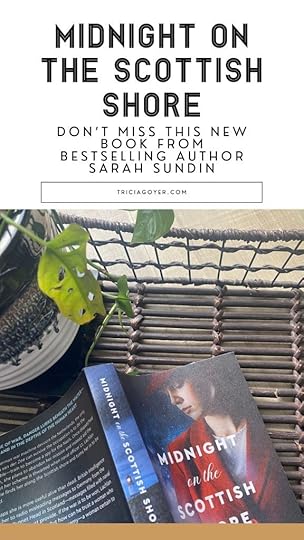
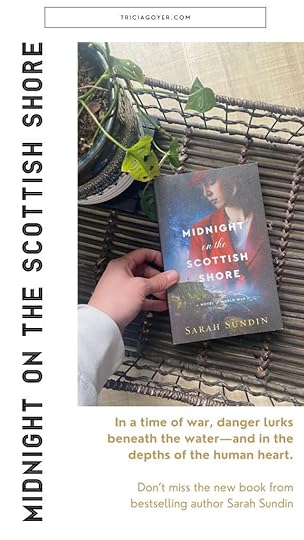 The post Writer’s Desk with Sarah Sundin appeared first on Tricia Goyer.
The post Writer’s Desk with Sarah Sundin appeared first on Tricia Goyer.
February 19, 2025
The Disguise Master: Meet Dexter the Mimic Octopus!
Hey friends! We are so excited you’re here for another Fun Friday: Fishy Facts & Fables—where faith, science, and storytelling come together to make learning both exciting and meaningful for your kids!

I’m Tricia Goyer, a homeschooling mom of ten, a writer, and a lifelong learner. And I’m thrilled to be here with my amazing co-author, Sherri Seligson—a marine biologist, curriculum writer, and homeschool mom of four. Together, we created Wonders of the Ocean Realm, a book filled with incredible true-to-life stories about five fascinating sea creatures, breathtaking artwork, scientific facts, and faith-based reflections.
In our previous episodes, we introduced Astrid the Sea Star and Maximus the Mighty Mantis Shrimp. Today, we’re diving deep to meet Dexter, the Mimic Octopus—one of the ocean’s most intelligent and fascinating creatures!
Meet Dexter the Mimic Octopus: The Master of DisguiseWhen we were selecting creatures for Wonders of the Ocean Realm, we wanted to showcase animals with truly unique abilities. That’s how we discovered the mimic octopus—an incredible shape-shifter of the sea!
At first glance, Dexter might look like any other octopus, but he has an extraordinary talent—he imitates other sea creatures! Most octopuses can change their color and texture, but Dexter takes it a step further. He copies the movement, shape, and behavior of different animals, helping him survive in the ocean’s depths.
Here’s what makes Dexter so amazing: Master of Disguise – Dexter can transform his body to mimic a venomous sea snake, a lionfish, or even a flatfish to scare off predators.
Master of Disguise – Dexter can transform his body to mimic a venomous sea snake, a lionfish, or even a flatfish to scare off predators. Color-Changing Camouflage – Using tiny cells called chromatophores, he instantly changes colors to blend into his surroundings.
Color-Changing Camouflage – Using tiny cells called chromatophores, he instantly changes colors to blend into his surroundings. Super Smart – Octopuses are some of the most intelligent creatures in the ocean! Dexter can solve puzzles, escape enclosures, and even learn from experience.
Super Smart – Octopuses are some of the most intelligent creatures in the ocean! Dexter can solve puzzles, escape enclosures, and even learn from experience. Nine Hearts! – Dexter has one large heart in his body and eight smaller hearts—one for each arm—helping him stay strong and coordinated.
Nine Hearts! – Dexter has one large heart in his body and eight smaller hearts—one for each arm—helping him stay strong and coordinated. Incredible Vision – Unlike humans, octopuses can see polarized light, giving them a totally different way of viewing the world!
Incredible Vision – Unlike humans, octopuses can see polarized light, giving them a totally different way of viewing the world!
One of the things that makes Wonders of the Ocean Realm special is that we don’t just list facts—we tell stories! We bring these incredible creatures to life by weaving real science into exciting adventures that engage young readers.
In Dexter’s story, he faces a challenge—how to avoid a hungry predator. By cleverly mimicking a banded sea snake, he fools a dangerous fish into thinking he’s too risky to eat. The way he changes his arms, adjusts his colors, and moves just like a snake is a perfect example of God’s incredible design in nature!
Want to see for yourself? Try imitating different animals with your kids: Slither like a snake
Slither like a snake Hop like a frog
Hop like a frog Scuttle like a crab
Scuttle like a crab Glide like an eagle
Glide like an eagle
It’s a fun way to help kids understand Dexter’s amazing abilities—and it’s sure to bring lots of giggles, too!
Faith Reflections: Designed for a PurposeDexter might be a small creature, but he has been perfectly designed by God to survive and thrive in the ocean. His ability to observe, learn, and adapt reminds us of these words of wisdom:
"Let the wise hear and increase in learning, and the one who understands obtain guidance." – Proverbs 15:5Like Dexter, we can grow in wisdom by paying attention, learning from others, and using the gifts God has given us. Just as he carefully watches other animals and adapts to his surroundings, we can observe kindness, faith, and wisdom in those around us—and apply those lessons in our own lives!
Ask your kids: What is something you’ve learned just by watching someone else?
What is something you’ve learned just by watching someone else? How can we use our gifts to honor God and help others?
How can we use our gifts to honor God and help others?
Want to explore how camouflage works? Try this fun, hands-on experiment!
 What You Need:
What You Need: Print our Dexter coloring sheets (see below!)
Print our Dexter coloring sheets (see below!) Colored pencils or markers
Colored pencils or markers Different textured backgrounds (wood grain, tile, carpet, or patterned fabric)
Different textured backgrounds (wood grain, tile, carpet, or patterned fabric)
 How to Do It:
How to Do It:
This activity helps kids understand how color and patterns help animals survive in their environment, just like Dexter does in the ocean!
Join Us for More Ocean Adventures!We hope you loved learning about Dexter the Mimic Octopus and his amazing disguise skills! If you’re looking for a way to teach science, storytelling, and faith in a hands-on, exciting way, Wonders of the Ocean Realm is the perfect resource for your homeschool.
 Next Week: We’ll introduce another incredible sea creature—stay tuned for more fun facts, stories, and hands-on activities!
Next Week: We’ll introduce another incredible sea creature—stay tuned for more fun facts, stories, and hands-on activities!
 Get your copy of Wonders of the Ocean Realm today!
Get your copy of Wonders of the Ocean Realm today! Download our FREE activity book!
Download our FREE activity book!
Thank you for joining us, and we can’t wait to explore more of God’s incredible ocean creatures with you! 


Need more ideas and advice on homeschooling? Pick up a copy of Homeschool Basics. Receive tried-and-true homeschool advice from veteran homeschooling moms Tricia Goyer and Kristi Clover. We dish out practical help on getting started and staying the course. Homeschool Basics will remind you that the best homeschooling starts with the heart. Packed with ideas to help you push aside your fears and raise kids who will grow to be life-long learners. Kristi and I believe that homeschooling can transform your life, your home, and your family. Mostly, we believe homeschooling can truly prepare your children for the life God’s called them to live. Don’t let doubts hold you back any longer. Get Homeschool Basics on Amazon Now!
The post The Disguise Master: Meet Dexter the Mimic Octopus! appeared first on Tricia Goyer.February 18, 2025
The Secret Sauce to Success
I still remember the first time I submitted an article to a magazine. I had poured my heart into the piece, carefully crafting each word, confident that it would inspire readers. But when the rejection email arrived, my heart sank. It wasn’t a harsh rejection—the editor kindly explained that my article was beautifully written but not the right fit for their audience.
In the recipe for the secret sauce to success, I had missed one key step: I hadn’t read the publication guidelines.

That rejection stung, but it also taught me an important lesson—knowing your audience matters. The same is true in real life. Whether it’s sending an email, having a conversation, or posting on social media, understanding who you’re speaking to and how to communicate effectively makes all the difference.
As a writer, I teach my students about publication guidelines—knowing your audience, following submission rules, and refining their work to meet expectations. Over the years, I’ve realized that these same principles prepare us for success in everyday life.
Here are five key ways publication guidelines help us navigate life—and how biblical wisdom aligns with these truths.
1. Know Your Audience: Speak with IntentionImagine spending hours perfecting a cherry pie recipe only to submit it to a fitness magazine that only accepts clean-eating recipes. No matter how delicious your pie is, it won’t get published because it doesn’t fit the audience.
Likewise, in life, we need to be mindful of who we’re talking to. A conversation with a child requires a different language than a business meeting. The way we share our faith with a questioning friend may look different than how we encourage a fellow believer.
Paul gives us a great example of this in 1 Corinthians 9:22:"I have become all things to all people so that by all possible means I might save some."
Paul knew how to tailor his message to different audiences while remaining true to the Gospel. As Christians, we should do the same, communicating with wisdom, grace, and intentionality.
2. Follow the Guidelines: Learn to Work Within BoundariesPractical Tip: Before you speak or write, ask yourself: Who is my audience? How can I communicate in a way that resonates with them?
Every writer knows that submission guidelines matter. You can’t send a 5,000-word feature to a magazine that only accepts 800-word articles.
Life has guidelines, too. Workplaces have expectations, relationships require respect, and faith calls us to live with integrity. God’s Word is our ultimate guideline—it brings clarity and direction, just like a well-written rulebook.
Psalm 119:105 reminds us:"Your word is a lamp to my feet and a light to my path."
When we follow God’s wisdom, we walk in peace. When we ignore guidelines—whether in writing or life—we create unnecessary struggle.
3. Handle Rejection with GracePractical Tip: Respect the boundaries in your workplace, relationships, and personal life. Trust that God’s guidelines lead to blessings, not restrictions.
Every writer faces rejection. It’s never easy to have a piece turned down, especially when you’ve poured your heart into it. But over time, I’ve learned that rejection isn’t failure—it’s redirection.
Jesus Himself experienced rejection. Yet, He remained faithful to His mission. When we face closed doors, we can trust that God is guiding us toward something better.
Isaiah 41:10 encourages us:"So do not fear, for I am with you; do not be dismayed, for I am your God. I will strengthen you and help you; I will uphold you with my righteous right hand."
Rejection doesn’t define us—it refines us.
4. Refine Your Work: Growth Takes EffortPractical Tip: When you face rejection—whether in writing, work, or relationships—pause and pray. Ask, “What can I learn from this? How can I grow?”
Good writing doesn’t happen in one draft. The best stories go through multiple rounds of revision. Similarly, our faith and character grow through refinement.
God calls us to continually be transformed, allowing Him to shape us through life’s experiences.
Romans 12:2 reminds us:"Do not conform to the pattern of this world, but be transformed by the renewing of your mind."
Every challenge, mistake, or setback is an opportunity for growth. Just as a manuscript gets stronger with editing, our faith deepens through trials.
5. Persevere and Keep SubmittingPractical Tip: Take time to reflect on areas where you need to grow. Just like a manuscript needs editing, your heart and mind need regular refinement through prayer and Scripture.
The best authors don’t give up after one rejection. They keep writing, improving, and pressing on. The same is true for life.
Maybe you’re in a season where doors keep closing. Maybe you’re struggling with parenting, health, or faith. Don’t quit. Keep showing up.
Galatians 6:9 encourages us:"Let us not become weary in doing good, for at the proper time we will reap a harvest if we do not give up."
God is always working, even when we can’t see it. The breakthrough comes to those who keep moving forward in faith.
Writing the Story of Your LifePractical Tip: If you feel discouraged, ask yourself: What’s one small step I can take today to move forward? Small steps lead to big victories over time.
Just like in publishing, life is a process of learning, growing, and refining.
When we:
Know our audienceRespect guidelinesHandle rejection with graceAllow God to refine usPersevere through challenges…we set ourselves up for success—not just in writing, but in every area of life.
So, what is one way you can apply these lessons today? Maybe it’s improving communication, stepping out of your comfort zone, or trusting God in the waiting.
Remember—He is the ultimate Author of your story.
I’d love to hear from you! What’s an area where you’ve seen these principles play out in your own life? Drop a comment below!
Additional ResourcesJournal Through the Bible in 2025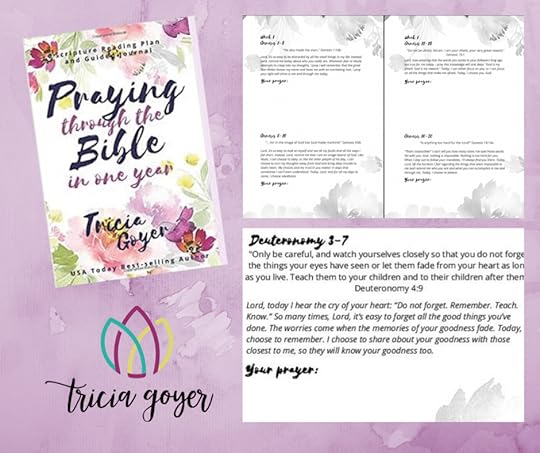
Have you ever wanted to read through the Bible but found yourself giving up? Or even worse, you read the chapters and at the end question how they apply to your life. Tricia Goyer understands. For years she felt frustrated that she couldn’t stick to her commitment to read God’s Word all the way through. Things changed when she found a doable plan and wrote out a daily prayer. Tricia’s heart changed. Her life did, too.
God can bring real transformation into your heart and life when you daily commit to reading your Bible and praying through God’s Word. Praying through the Bible in One Year offers a guided reading plan and a daily prayer starter to help you make God’s Word applicable to your life. Discover the inspiration for real-life transformation.
Purchase a copy of Praying Through the Bible in One Year HERE.
The post The Secret Sauce to Success appeared first on Tricia Goyer.February 17, 2025
How to Conduct an Oral History Interview (For Teens!)
Have you ever wished you could hear stories from the past straight from someone who lived them? Oral history interviews are a powerful way to capture the memories and experiences of people in your community—whether it’s your grandparent, a neighbor, or a teacher. These interviews help preserve history in a way that books can’t. They capture real voices, real emotions, and real experiences.

I know this firsthand. Some of the most meaningful moments of my life have come from sitting across the table from World War II veterans and Holocaust survivors, listening to their stories. I’ve had the privilege of hearing firsthand accounts of courage, sacrifice, and resilience. The are stories that will never be found in history textbooks. I’ve sat with men who liberated concentration camps, women who built great warships, and survivors who endured unimaginable horrors yet still found hope. These conversations changed me. They made history come alive, not as something distant and impersonal, but as real, flesh-and-blood experiences that shaped the world we live in today.
That’s the beauty of oral history. It connects us to the past in a deeply personal way. And the good news is you don’t have to be a historian or a journalist to conduct an oral history interview. Anyone can do it, including you! All you need is curiosity, a willingness to listen, and a few simple tools.
If you’re ready to preserve history and give someone the chance to share their story, here’s everything you need to know to get started!
What is Oral History?Oral history is a way of recording and preserving people’s stories through interviews. Instead of reading about history in a textbook, oral history allows you to hear it firsthand from someone who actually lived through it!
Who Should Conduct an Oral History Interview?Anyone! If you’re interested in learning about the past and helping to preserve personal and community history, you can conduct an oral history interview. All you need is curiosity, respect for the person you’re interviewing, and a willingness to listen.
Who Should You Interview?You can interview:
Grandparents or older relativesVeterans or people who served in the militaryCommunity leaders or longtime residentsTeachers or coachesSomeone who experienced an important moment in historyThe person telling their story is called the narrator—because they are sharing their personal experiences with you.
Are Oral History Interviews Only Audio Recordings?No! While many oral history interviews are recorded as audio files, you can also record video, take notes, or even write down stories by hand. You might also take a photo of the person or any objects they talk about during the interview.
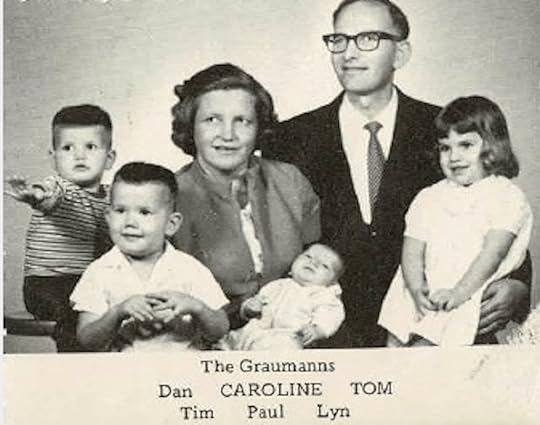 How Long Should the Interview Be?
How Long Should the Interview Be?Start with 15 minutes—that’s usually long enough to hear an interesting story without making the narrator too tired. If they’re enjoying it, you can always go longer!
What If the Narrator Has Trouble Remembering or Feels Uncomfortable?If they forget something, give them time. Sometimes memories need a few moments to surface.If they don’t want to answer a question, that’s okay. Move on to another topic.Help them feel comfortable by smiling, nodding, and showing interest in their stories.What If the Recorder Makes the Narrator Nervous?Before starting, show them how the recorder works and let them get used to it.Remind them that they can take breaks or stop whenever they want.If they prefer, you can start without the recorder and just take notes at first.How Many People Should Be in the Interview?Just you and the narrator! Too many people can be distracting. If you have a partner, they can help take notes, but keep the group small.
 What If the Narrator Wants to Talk About a Photograph or Other Object?
What If the Narrator Wants to Talk About a Photograph or Other Object?Great! Objects like photographs, letters, or old toys can help spark memories. If they bring something up, take a picture of it so you can remember later.
Checklist: What to Do Before the Interview Choose your narrator (someone with interesting life experiences)
Choose your narrator (someone with interesting life experiences) Pick a quiet place (background noise can be distracting)
Pick a quiet place (background noise can be distracting) Test your recorder (make sure it works!)
Test your recorder (make sure it works!) Bring tissues (some memories may bring tears)
Bring tissues (some memories may bring tears) Practice active listening (eye contact, nodding, and saying “Wow, that’s interesting!”)
Practice active listening (eye contact, nodding, and saying “Wow, that’s interesting!”) LISTEN! (Don’t interrupt—let them talk.)
LISTEN! (Don’t interrupt—let them talk.)
Begin with an introduction: “My name is [your name]. I am interviewing [narrator’s name] on [date]. We are talking about [topic].”
“My name is [your name]. I am interviewing [narrator’s name] on [date]. We are talking about [topic].”
You can ask about:
Historical moments (e.g., “What do you remember about 9/11?” or “What was life like before cell phones?”)Life topics (e.g., “What was your childhood like?” or “How did you meet your best friend?”)Family traditions (e.g., “What was your favorite holiday tradition growing up?”)How to Ask Follow-Up QuestionsIf they tell a great story, keep the conversation going! Try asking: “Can you tell me more about that?”
“Can you tell me more about that?” “How did you feel when that happened?”
“How did you feel when that happened?” “What happened next?”
“What happened next?”
 Possible Interview Questions
Possible Interview Questions “What is one of your favorite childhood memories?”
“What is one of your favorite childhood memories?” “What was school like when you were growing up?”
“What was school like when you were growing up?” “Did you have a favorite teacher? Why?”
“Did you have a favorite teacher? Why?” “What was the biggest change you’ve seen in your lifetime?”
“What was the biggest change you’ve seen in your lifetime?” “What advice would you give to young people today?”
“What advice would you give to young people today?”
Remember, an oral history interview isn’t a test—it’s a conversation. Enjoy the stories, laugh at funny memories, and appreciate the chance to learn something new from someone who’s lived it. Who knows? You might even discover a story that changes the way you see the world!
 Now it’s your turn! Who will you interview first?
Now it’s your turn! Who will you interview first?
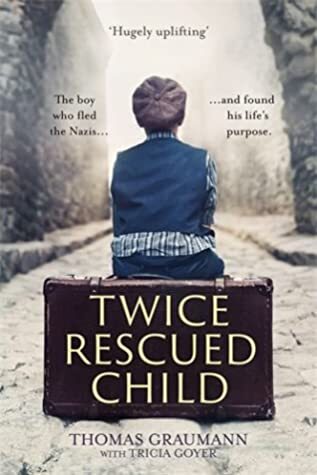

More Resources
Looking for a book you can enjoy together as a family? Try this one!
Also, here’s a great resource to create a screen-free family reading or devotional time.
Looking for more parenting tips? Check out Faith that Sticks!
The post How to Conduct an Oral History Interview (For Teens!) appeared first on Tricia Goyer.Creating a Legacy of Financial Wisdom for Our Kids
For many of us, money was a mystery growing up. Some of us saw our parents struggle, living paycheck to paycheck, always stressed about the next bill. Others had parents who seemed to have it all together financially but never taught us how to manage money ourselves. Either way, when we became adults, we had to figure it out—often through trial and error.
But what if our kids didn’t have to learn the hard way?

I recently had the opportunity to talk with Dr. Paul Blake, author of The Genius Next Door, and his insights on financial parenting were eye-opening. He explains that financial education alone doesn’t change behavior—if it did, we’d all be much better with money by now. The key isn’t just knowing about finances. It’s about learning to make wise financial choices and developing habits that build generational wealth.
Why Financial Wisdom is a Family IssueOne of the biggest myths about money is that if we just teach kids about saving and budgeting, they’ll be financially responsible. But the reality is, financial wisdom isn’t something kids absorb from a textbook. They learn it from watching us.
“Teaching kids smart spending habits early—like price-checking before buying—helps them become wiser with money.”
— Dr. Paul Blake
If we constantly swipe our credit cards at Target, they notice. If we talk about tithing and generosity but never actually model it, they notice. If we let money slip through our fingers without ever making a plan, they notice.
The good news? Just like kids can pick up bad habits, they can also pick up good ones.
The Missing Piece: MotivationDr. Blake shared something that stuck with me: Financial literacy and financial behavior are not linked. You can teach kids all the money principles in the world, but unless they are motivated to save and invest, those lessons won’t stick.
So how do we motivate them?
Many parents use the classic “save this percentage, spend this percentage” model. But let’s be honest—that sounds boring to most kids. Instead, Dr. Blake suggests teaching kids the power of investment interest—but in a way that’s exciting.
He calls it “free money.”
The idea is to help kids see that saving isn’t about sacrifice—it’s about gaining freedom.
“Most young adults aren’t motivated to save for college, but what if we helped them front-load their savings instead of waiting until later?”
— Dr. Paul Blake
Instead of telling them to set money aside for some far-off future, he recommends giving them an immediate benefit. For example, a parent or grandparent could offer an incentive: “For every $50 you save, I’ll give you an extra $10 you can spend now.”
That small, immediate reward is enough to shift a child’s mindset from “saving is restrictive” to “saving gives me options.”
Investing with DadAnother powerful concept he introduced is letting kids “invest with Dad” (or Mom, or a trusted adult). Instead of allowing kids to keep their savings in a low-interest bank account—or worse, in cash where they can easily spend it—parents can offer to hold onto their savings and pay them a higher interest rate.
If the bank offers 1%, but Dad offers 10%, where do you think the kids will want to put their money?
“Saving isn’t just about the future; it’s about creating freedom. The earlier you start, the more options you’ll have.”
— Dr. Paul Blake
This teaches them how investments work, builds trust, and helps them see real returns. And when they start earning actual interest payouts—money they get to spend while their principal stays intact—they get excited. They start seeing the power of long-term financial planning.
Why Financial Wisdom MattersHere’s something to think about:
If a child starts aggressively saving between ages 15 and 25, they could realistically save $125,000. When invested wisely, that money could grow into a million dollars by retirement.
Most people think saving for retirement happens in your 40s and 50s, but what if the best time was actually in your teens and early 20s?
What if, instead of barely scraping by in their later years, our kids could have financial freedom before they even hit middle age?
The Big Picture of Financial WisdomTeaching financial wisdom isn’t just about giving our kids a good start—it’s about creating generational stability. We may have inherited good financial habits—or bad ones—but we get to decide what we pass on.
And while we can’t control everything about the future, we can give our kids the tools they need to make wise financial choices. We can teach them that money is a resource, not a master. We can show them that financial freedom isn’t about having more—it’s about making intentional choices.
And most importantly, we can remind them that their worth isn’t tied to their wealth. That generosity, faith, and responsibility matter more than a bank balance.
The best inheritance we can leave isn’t just money—it’s wisdom.
“We may have inherited good financial habits—or ones that were lacking. The question is, what will we pass on?”
— Dr. Paul Blake
So, where do we start? By having real conversations, making a plan, and modeling the kind of financial habits we want them to have.
Find the full podcast episode here!
What’s one financial lesson you wish you had learned earlier? I’d love to hear your thoughts in the comments!
Additional Resources
Looking for a book you can enjoy together as a family? Try this one!
Also, here’s a great resource to create a screen-free family reading or devotional time.
Looking for more parenting tips? Check out Faith that Sticks!
The post Creating a Legacy of Financial Wisdom for Our Kids appeared first on Tricia Goyer.
February 16, 2025
Strength in Silence
Adopting seven children has brought more joy, love, and yes, chaos into my life than I ever imagined. My days are filled with laughter, questions, and a constant hum of activity. Even though some of my children are now adults, each day someone, somewhere needs something—a ride, advice, a meal, or just a listening ear. But in the midst of the noise and the never-ending demands, I’ve discovered the profound importance of seeking peace in God’s presence. It’s in those rare quiet moments—when the house finally settles—that I find the strength and serenity my soul desperately needs.
 The Power of Stillness
The Power of StillnessReflecting on my journey, I’m often reminded of my dear friend Thomas Graumann, whose story I had the privilege of sharing in Twice Rescued Child. Thomas lost his entire family in the Holocaust, yet he found incredible strength in the silence of God’s presence. His resilience and unwavering faith remain a testament to the peace that surpasses all understanding, as Philippians 4:7 promises:
“And the peace of God, which transcends all understanding, will guard your hearts and your minds in Christ Jesus.”This verse isn’t just a nice sentiment; it’s a lifeline. Whether it’s navigating adoption, tackling homeschooling, or simply keeping up with daily life, I’ve found God’s peace is often the only thing that sustains me.
Hearing God in the QuietLate at night, when the house is still and my heart feels heavy, I often pour out my worries and exhaustion to God. It’s in those moments, as I sit in silence, that I sense His comforting presence. Much like Elijah in 1 Kings 19:12, I’ve learned that God’s voice isn’t always in the loud and dramatic. Sometimes, He speaks in a gentle whisper—a reminder that His presence is most often found in the stillness.
Three Ways to Recognize God’s Peace in Your Life1. Through Prayer and ReflectionSetting aside intentional time to sit with God opens the door for His peace to fill your heart. Whether it’s praying, meditating on Scripture, or simply being still in His presence, these moments allow you to hear His gentle whisper.
Start your day with five minutes of quiet reflection, inviting God to calm your mind and guide your steps.2. In Nature’s Quiet BeautyStepping outside and immersing yourself in God’s creation has a way of quieting the noise in your mind. The beauty of a sunrise, the sound of rustling leaves, or the stillness of a starry night reminds us of God’s constant care and provision.
Take a short walk in nature and intentionally thank God for His creation.3. By Surrendering Your WorriesWhen we cast our anxieties on God, as instructed in 1 Peter 5:7, we make room for His peace to replace our fears. Trusting His plan gives us the strength to face challenges with confidence and calm.
Write down your worries and pray over them, asking God to carry the burdens you’re holding.A Prayer for PeaceDear Heavenly Father,
Thank You for the gift of Your peace that surpasses all understanding. Help us to seek Your presence in the stillness and find strength in Your gentle whisper. Teach us to surrender our worries and trust fully in Your plan. May Your peace guard our hearts and minds, filling us with the assurance of Your unfailing love.
In Jesus’ name, Amen.
In our busy and often overwhelming world, let’s make room for God’s gentle whispers. His peace has the power to transform not only our hearts but also the way we approach our days. May we find solace and strength in those quiet moments with Him, trusting His love to carry us through every season.
Call to Action: What practices or moments have helped you experience God’s peace? Share your story in the comments—I’d love to learn from your journey and encourage one another!
~Tricia
Want more insight? Join us in reading Job on the Daily Bible podcast!  LISTEN &
LISTEN &  WATCH
WATCH
 Introducing the Daily Bible Podcast Audio Player!
Introducing the Daily Bible Podcast Audio Player! 
Immerse yourself in God’s Word like never before with the MegaVoice Daily Bible Podcast Audio Player—a solar-powered, portable way to listen to the entire NIV Bible and the Daily Bible Podcast with Tricia Goyer and Michelle Hill!
 Unplug & Listen – Step away from digital distractions and enjoy an uninterrupted discipleship experience.
Unplug & Listen – Step away from digital distractions and enjoy an uninterrupted discipleship experience. Simple & Accessible – With easy controls, it’s perfect for all ages, including kids, seniors, and the visually impaired.
Simple & Accessible – With easy controls, it’s perfect for all ages, including kids, seniors, and the visually impaired. Listen Anywhere, Anytime – Solar-powered with up to 14 hours of battery life, plus a USB charging option for cloudy days.
Listen Anywhere, Anytime – Solar-powered with up to 14 hours of battery life, plus a USB charging option for cloudy days.
 Whether you’re at home, on a mission trip, or enjoying quiet time in nature, this MegaVoice Audio Bible Player helps you stay connected to God’s Word—without a screen!
Whether you’re at home, on a mission trip, or enjoying quiet time in nature, this MegaVoice Audio Bible Player helps you stay connected to God’s Word—without a screen!
 Get yours today and experience the Bible in a whole new way!
Get yours today and experience the Bible in a whole new way!
Leviticus 4-6
 What If I Don’t Mean to Sin?
What If I Don’t Mean to Sin?In the heart of the Old Testament, the book of Leviticus presents a fascinating study of sin, sacrifice, and atonement. Today’s reading focused on the concept of unintentional sin..
The Reality of Unintentional Sin“Sin unintentionally” – these words capture the essence of actions taken without malice but still in violation of divine laws. Leviticus underscores a critical truth: ignorance of sin does not mean we’re not guilty. Whether it’s the high priest, the entire community, a leader, or the common people, each group is held accountable for their actions, even when those actions are unintentional. What sacrifices were required? A bull for the high priest and the community, a male goat for a leader, and a female goat for common individuals. These offerings symbolize the seriousness with which these unintentional sins are viewed and the lengths to which atonement must be sought.
The Process of AtonementThe rituals described for atonement involved the laying of hands on the animal, slaughtering it, and the priest applying its blood in a ceremonial fashion. These acts are not merely ritualistic; they represent a deep, symbolic cleansing and reconciliation with God. The burning of the goat’s fat on the altar, similar to the peace offering, represents the restoration of peace between the individual and God. It’s a reminder of the cost of sin and the path to forgiveness.
Leviticus as a Manual and a MirrorThe meticulous rituals of Leviticus, while distant, remind us of the importance of acknowledging our mistakes, intentional or not, and seeking reconciliation. These rituals underline a universal truth: our actions have consequences, and acknowledging our faults is the first step toward redemption.
Word of the Day: StandardA rule or principle that is used as a basis for judgment; those morals, ethics, habits, etc., established by authority, custom, or an individual as acceptable.
The concept of “standard” serves as a powerful reminder of the benchmarks set by God for living a righteous life. These divine standards are not arbitrary. They are designed for our well-being and success. In a world where “good enough” often suffices, the call to uphold God’s standards challenges us to strive for excellence in our spiritual journey.
Applications for Today1. Embracing Divine Standards: These divine benchmarks invite us to continually improve, not for earthly accolades but for spiritual growth.
2. Tradition vs. Truth: In our quest to live by God’s standards, we must discern between tradition and truth. The example of unintentional sins in Leviticus encourages us to examine our practices and beliefs, ensuring they align with divine truth rather than merely human tradition.
Leviticus offers a lens through which to view our imperfections and God’s infinite grace. It challenges us to reflect on our actions, intentions, and the standards by which we live. As we navigate the complexities of life, let us remember the lessons from Leviticus: to seek forgiveness, to strive for higher standards, and to cherish the grace that transforms our unintentional wrongs into opportunities for spiritual growth and renewal.
February 18Leviticus 7-8
 Daily Transformation
Daily TransformationThe phrase “these are the instructions” introduces the Guilt Offering. The Guilt Offering serves as a tangible acknowledgment of wrongdoing and a step towards reconciliation with God. The narrative transitions to the Peace Offering, symbolizing thanksgiving and voluntary dedication beyond what is required. The lifting of the offering signifies its presentation to God and the offerer’s heartfelt gratitude and commitment.
Sacred Prohibitions: The Sanctity of Blood and FatLeviticus 7 also addresses the solemn prohibitions against consuming blood and fat. The stringent instructions to burn the fat and thoroughly drain the blood before consumption highlight the deep reverence for life and the divine commandments, with violators facing expulsion from the community.
The Priestly Portion: Consecration and ServiceThe chapter delineates the portions of the Peace Offering allocated to the priests, specifically the breast and thigh. This allocation symbolizes the consecration of the priests to God and their vital role in mediating between the divine and the Israelites. It reaffirms the sacred duty of the priests to serve and uphold the sanctity of their calling.
Ordination of the Priests: Anointing for ServiceFurther, Leviticus revisits the ordination of the priests. The anointing of Aaron and his sons with blood on their ear, thumb, and toe not only consecrates them for divine service but also symbolizes their commitment to listen to God, perform His work, and walk in His ways.
Living as Modern-Day PriestsAs we navigate the complex rituals of Leviticus, we are reminded of the broader narrative of reconciliation and holiness. God’s provision for His people to dwell in His presence is a central theme, underscoring the importance of holiness and the role of the priests as mediators and representatives of God.
In our contemporary journey of faith, we are called to embrace our role as modern-day priests. Romans 6:13 urges us to offer ourselves completely to God, using our bodies as instruments for righteousness. This calling mirrors the separation and dedication of the Levitical priests, urging us to live lives set apart for God’s glory.
Word of the Day: ExhibitApplication in Daily Life: Exhibiting God’s PresenceTo offer or expose to view; present for inspection; to manifest or display.
In practical terms, being set apart for God translates into daily actions and decisions that reflect His love and righteousness. Whether it’s through loving our families, serving others, or simply being faithful in the mundane tasks of life, we exhibit God’s presence and work in the world. Our daily lives become a testament to His grace as we strive to listen, do, and walk in ways that honor Him.
Understanding and applying these ancient rituals to our lives teaches us the value of being set apart for God. We can embrace our role as His modern-day priests and live out our faith with dedication and purpose.
February 19Leviticus 9-11
 Embracing Holiness
Embracing HolinessIn the heart of Leviticus, nestled between the regulations and rituals, lies a narrative that challenges us to reconsider our understanding of holiness and the presence of God among us. The journey from Exodus to Leviticus is not just a transition from one book to another; it’s a transition from a concept to a living reality, from God meeting His people on the mountain to dwelling among them in the Tabernacle.
The structure of the Tabernacle, with its distinct zones—the Holy of Holies, the inner court, and the outer court—mirrors the structured approach God desires in our relationship with Him. It’s a physical representation of how we are to approach God, with reverence and understanding of our place in His presence.
The narrative takes a dramatic turn with the story of Aaron’s sons, Nadab and Abihu, who offered unauthorized fire before the Lord and paid the ultimate price for their disobedience. This event is a stark reminder of the consequences of treating God’s holiness lightly. It’s important to respect the divine boundaries set by God, recognizing that His pure goodness becomes dangerous when we rebel against His commands.
The incident also highlights the importance of distinguishing between what is sacred and what is common. We live in a world vastly different from the open-air courtyards and the ornate tabernacle of ancient Israel. Yet, the call to holiness and the need to set apart what is sacred in our lives is still important.
In Leviticus 11, the dietary laws and the distinctions between clean and unclean animals seem distant from our contemporary concerns. However, these regulations are not just about food. They symbolize a deeper spiritual reality: call to be holy, as God is holy.
What does this mean for us today? The narrative of Leviticus invites us to reflect on the presence of God among us. It challenges us to consider how we create holy spaces in our lives to welcome God. Are we mindful of what we consider sacred? Do we approach God with the reverence He deserves? How do we embody the role of priests in our modern world, representing God before the people and the people before God?
Word of the Day: AmongIn, into, or through the midst of; in association or connection with; surrounded by; in the midst of, so as to influence.
The story of Aaron and his sons, the intricate details of the Tabernacle, and the laws of cleanliness all point to the same truth: God is holy, and He calls us to share in that holiness. This is not a call to ritual purity but to a life set apart. This is marked by a deep reverence for God and a commitment to live according to His divine will. God is indeed among us, guiding us, shaping us, and calling us to be a holy people for His glory.
As we delve into these ancient rituals, we can be inspired to live out the profound and timeless truths they contain, making space for God in every aspect of our lives.
February 20Leviticus 12-14
 Rediscovering Purity
Rediscovering PurityIn today’s fast-paced world, the ancient texts of Leviticus, particularly chapters 12 to 14, might seem distant and difficult to relate to. Yet, upon closer examination, these Scriptures unfold profound insights into the concepts of cleanliness and uncleanliness, extending far beyond mere physical purity to touch upon a deeper, spiritual holiness in connection with God’s perfection.
Leviticus 12 offers a fascinating look into the purification process for women after childbirth, underscoring the sanctity of life and the essential role of ritual cleanliness in returning to communal worship. It prescribes a period for the mother to remain in a state of purification, culminating in a sacrificial offering to the Lord, a beautiful gesture of gratitude and recognition of life’s sacredness.
In Leviticus 13, the text delves into examining and managing skin diseases and mildew, providing priests with detailed instructions for diagnosing and handling conditions considered ‘unclean.’ This chapter emphasizes the community’s responsibility in halting the spread of disease, highlighting the importance of safeguarding both health and ritual purity.
Leviticus 14 continues this theme by extending into the cleansing rituals for leprosy, covering not just individuals but also garments and houses. While these practices may seem antiquated at first glance, they offer pathways for those affected to be restored to cleanliness and reintegrated into the community. These rituals symbolize the potential for redemption and the reattainment of holiness through adherence to divine commands, shedding light on New Testament events where Jesus, after healing someone, instructs them to “Go show yourself to the priest.”
The distinction between cleanliness and holiness within these chapters is crucial. While objects or individuals can be clean without being holy, holiness embodies a more significant dimension, linking all aspects of our lives to the divine nature of God and humanity’s reverence towards Him. This relationship is vividly portrayed in the prophets, such as in Ezekiel 22:26, where the failure to distinguish between what is holy and what is not leads to dishonor and sin.
Thus, while the immediate relevance of these Levitical laws might not be apparent, their importance is undeniable. The vigilance against uncleanliness prescribed in God’s Law plays a vital role in daily life, merging moral and ritual requirements. This mindfulness fosters a community striving for cleanliness and wholesomeness, serving both a spiritual and practical purpose in maintaining health and preventing disease.
Word of the Day: PurityThe condition or quality of being pure; freedom from anything that debases, contaminates, pollutes, etc.; freedom from guilt or evil; innocence; freedom from foreign or inappropriate elements; careful correctness.
Today’s word serves as a poignant reminder of the inner purity God calls us to. Paul’s advice in Philippians 4:8 resonates with the essence of these teachings, urging us to fix our thoughts on what is true, honorable, right, pure, lovely, and admirable—qualities that embody a life lived in alignment with God’s expectations.
So, do these chapters in Leviticus apply to us today? Absolutely. They challenge us to reflect on the nature of true cleanliness, not just outwardly but in the purity of our hearts and minds. Jesus’ words in Matthew 15:16-20 underscore this, as He points out that what defiles us comes from within, from our hearts, highlighting the importance of inner purity over external rituals.
This insight compels us to introspect and question our motives and the nature of our thoughts. Cultivating a spirit of purity, where our thoughts, actions, and words align with the values of love, kindness, and honesty, is the real challenge. With the Holy Spirit’s help, it’s about striving to let only what is noble, just, and pure take root within us.
In embracing the ancient teachings on cleanliness, coupled with Jesus’ profound clarification, we are reminded of the critical importance of both external practices for health and purity and, more importantly, of nurturing a heart that mirrors true cleanliness—morally uncontaminated, pure, and innocent. This journey towards true cleanliness is not just about adhering to ancient laws but about embodying the spirit of these teachings in our daily lives, ensuring that our hearts and actions reflect the divine purity God desires.
February 21Leviticus 14:33-57; Leviticus 15-16
 Finding Holiness in the Everyday
Finding Holiness in the EverydayLeviticus might not be the first book you turn to for inspiration or guidance, but hidden within its ancient rituals and laws are timeless truths about living a life close to God. As we delve into Leviticus 14:33-57, 15, and 16, we uncover this: God cares deeply about every aspect of our lives, from our homes to our health. More than that, God provides ways for us to maintain a pure and holy relationship with Him.
A Clean Home and a Pure HeartImagine finding mold in your home and having a specific way to clean it, blessed by God Himself. That’s what we see in Leviticus 14. It’s not just about keeping our living spaces clean. It’s a metaphor for our lives. As Moses shared these laws, the listener would have understood that God was telling His people to keep an eye out for the ‘mold’ in their lives—sin that creeps in—and to deal with it promptly. Our external actions do reflect our internal state.
Health, Holiness, and HealingLeviticus 15 might seem all about physical conditions, but going deeper, we also see it’s really about how our personal well-being affects our spiritual lives and those around us. We’re not just taking care of ourselves by following God’s guidance on cleanliness. We’re also respecting the community and God’s presence among us. It’s a reminder that our bodies are temples of the Holy Spirit, and we’re called to treat them with care and respect.
The Day of Atonement: A Fresh StartLeviticus 16, detailing the Day of Atonement, is about getting a clean slate. It’s beautiful how God provides a way for everyone—leaders and people alike—to be cleansed from their sins. This day was a profound reminder of the seriousness of sin and the incredible gift of forgiveness. It’s a day of humility, fasting, and reflection, leading to renewal and a restored relationship with God.
Word of the Day: CleanseWhat This Means for UsTo make clean; to remove by or as if by cleaning.
The rituals in Leviticus might seem distant and complicated, but they boil down to a few simple truths. God is holy and wants to live in a close relationship with us. Sin and impurity disrupt that relationship, but God doesn’t leave us without hope. He has provided a way for us to be cleansed and return to Him.
In today’s terms, it’s about looking at our lives and asking, “What needs to be cleaned up? What have I allowed to creep in that’s putting distance between me and God?” It’s about recognizing that God cares for us so deeply that He provides ways for us to return to Him, no matter how far we’ve strayed.
Embracing CleanlinessThe call to holiness is not about following a list of rules; it’s about living in a way that reflects God’s love and purity in every area of our lives. It’s about acknowledging our need for God’s cleansing power and embracing His forgiveness and grace daily.
As we reflect on the messages of Leviticus, let’s remember that God’s desire is for us to live lives marked by His presence. Let’s approach Him with humble hearts, willing to be cleansed and made new. Through Jesus, we have the ultimate sacrifice that makes atonement for us all, offering us a chance to live in the fullness of God’s love and holiness daily.
In the end, Leviticus is not just a book of ancient laws; it’s a guide to living a life that’s in tune with God’s heart—a life that’s clean, pure, and full of His presence. Let’s embrace that life today.
February 22Leviticus 17-19
 Living Differently
Living DifferentlyAs we journey through Leviticus 17, 18, and 19, we’re invited into a deeper understanding of how God instructs the Israelites—and, by extension, us—on living lives that are consecrated and distinct.
The Sacredness of Life and WorshipLeviticus 17 brings us face-to-face with the sacredness of blood, highlighting its role as the life force in God’s creation. The chapter demands centralizing worship in the Tabernacle and prohibits the consumption of blood, directives aimed not only at maintaining purity but also at setting the Israelites apart from neighboring peoples. This chapter also addresses idolatry, specifically the sacrifice to goat idols or demons—a clear “don’t do that” from God. In the New Testament (Hebrews 9:22), these themes point towards Christ’s ultimate sacrifice for our sins.
Maintaining Family Integrity and Community SanctityIn Leviticus 18, God delineates boundaries around sexual morality. These laws were countercultural then, setting the Israelites apart from the practices of Egypt and Canaan, including incestuous relationships that were surprisingly common in other nations. The command, “Do not act like the people in Egypt…or like the people of Canaan,” serves as a stark warning, urging God’s people to uphold a different standard of holiness in their personal and community lives.
Holiness in Everyday ActionsLeviticus 19 extends the call to holiness to every aspect of life, echoing the Ten Commandments in greater detail. It begins with a powerful directive: “You must be holy because I, the Lord your God, am holy.” This chapter is a beautiful blend of ethical, ritual, and social laws, emphasizing justice, love for neighbors, and the importance of the Sabbath—all underpinned by the repeated affirmation, “I am the Lord.”
The Heart of the MatterGod’s message through these chapters is clear: to be set apart. He calls His people to live differently, not by the absence of rules or mimicking the ways of others but by following Him. The prohibitions and commandments are not arbitrary; they protect against defilement and ensure the community’s purity and well-being.
The detailed commandments in Leviticus, while specific to the Israelites’ context, speak volumes about God’s desire for His people to live in a manner that reflects His holiness. Like a parent guiding a toddler, God’s instructions are clear and repetitive, covering potential “loopholes” to ensure understanding and compliance.
Word of the Day: CarefulCautious in one’s actions; taking pains in one’s work; solicitously mindful.
As we reflect on these chapters, the call to “be careful to keep all of my decrees and regulations” is as relevant today as it was then. It’s about living in a way that acknowledges God’s presence among us, prompting us to act differently—carefully, thoughtfully, and with a deep respect for the sacredness of life and the holiness of God. It’s a call to examine our lives, to find ways to live out these principles in today’s world, and to embrace the distinctiveness of living in a close relationship with a holy God.
February 23Leviticus 20-22
 The Weight of Our Choices
The Weight of Our ChoicesIn today’s reading, we delve into the divine instructions given to Moses, focusing on the severe consequences of sin. A recurring theme that resonated deeply with me was the call to “be set apart.” God wanted His people to eliminate wickedness and embrace holiness to mirror His own purity.
Today’s reading started with the sin of child sacrifice to Molech, a deed punishable by stoning. Imagining oneself among the crowd witnessing such a punishment evokes a profound sense of the tragedy of sin and its consequences. This ancient justice system prescribed death for idolatry, blasphemy, murder, and adultery.
To cut off such evil was crucial. The Israelites stood on the brink of entering new lands, and God was laying the groundwork for their future. God’s warnings against evil practices are coupled with promises of a land “flowing with milk and honey.” Leviticus chapters 21 and 22 further detail the sanctity required of priests and the standards for offerings, highlighting the overarching theme of purity and dedication in service to the divine.
Word of the Day: ApartTo or at one side, with respect to place, purpose, or function; having independent or unique qualities, features, or characteristics.
The concept of being “set apart,” illustrated God’s desire for His people and priests to reflect His holiness. This principle of separation, however, extends beyond the ancient texts to resonate within our own lives.
The concept of holiness, emphasized in Exodus with the high priest’s turban inscribed with “Holiness to the Lord,” reminds us of God’s unchanging nature and the call for His people to be holy in their actions. The insistence on separation is not merely for distinction but for cultivating a community that mirrors God’s presence among them.
We walk away from today’s reading with this: consequences serve a purpose. They remind us of the impact of our actions, not just on ourselves but on those around us. Consequences also help us understand our sins better so we may seek holiness in our lives. These lessons remind us to consider the weight of our choices and to reflect the holiness of God in our lives.
The post Strength in Silence appeared first on Tricia Goyer.February 13, 2025
Exploring the Deep: Meet Maximus the Mighty Mantis Shrimp!
Hey friends! We are so glad you’re here for another Fun Friday: Fishy Facts & Fables—where faith, science, and storytelling come together to make learning both exciting and meaningful for your kids!

I’m Tricia Goyer, a homeschooling mom of ten, a writer, and a lifelong learner. And I’m thrilled to be here with my amazing co-author, Sherri Seligson—a marine biologist, curriculum writer, and homeschool mom of four. Together, we created Wonders of the Ocean Realm, a book filled with incredible true-to-life stories about five fascinating sea creatures, breathtaking artwork, scientific facts, and faith-based reflections.
Last time, we introduced you to Astrid the Sea Star, and today, we’re diving deep to meet Maximus, the Peacock Mantis Shrimp—one of the ocean’s most incredible and surprisingly powerful creatures!
Meet Maximus: The Superhero of the SeaWhen we were selecting creatures for Wonders of the Ocean Realm, we wanted to highlight some of the lesser-known but truly amazing animals in the ocean. That’s how we discovered the peacock mantis shrimp—a tiny but mighty powerhouse that few people know about.
At first glance, Maximus may look like a beautiful rainbow-colored shrimp, but don’t let his small size fool you—he’s one of the most powerful hunters in the ocean! Here’s what makes him so unique:
 Super Speed: Maximus throws punches faster than a speeding bullet—literally! His punch moves faster than the speed of sound, creating a shockwave and even a small flash of light underwater!
Super Speed: Maximus throws punches faster than a speeding bullet—literally! His punch moves faster than the speed of sound, creating a shockwave and even a small flash of light underwater!
 Super Strength: His punch is so powerful that it can break aquarium glass and crack open the shells of crabs and snails with ease.
Super Strength: His punch is so powerful that it can break aquarium glass and crack open the shells of crabs and snails with ease.
 Super Vision: Maximus has the most advanced eyesight in the animal kingdom. While humans have three color receptors in our eyes (red, blue, and green), Maximus has twelve—allowing him to see colors that we can’t even imagine, including ultraviolet and polarized light!
Super Vision: Maximus has the most advanced eyesight in the animal kingdom. While humans have three color receptors in our eyes (red, blue, and green), Maximus has twelve—allowing him to see colors that we can’t even imagine, including ultraviolet and polarized light!
 Perfectly Designed for Survival: His incredible speed, strength, and vision help him thrive in the ocean’s depths, proving that God has equipped every creature with exactly what they need to survive.
Perfectly Designed for Survival: His incredible speed, strength, and vision help him thrive in the ocean’s depths, proving that God has equipped every creature with exactly what they need to survive.
One of the things that makes Wonders of the Ocean Realm special is that we don’t just list facts—we tell stories! We bring these incredible creatures to life by weaving real science into exciting adventures that engage young readers.
In Maximus’s story, he finds himself captured and placed in an aquarium. But, true to his nature, he refuses to stay trapped! Using his mighty punch, he cracks the glass and makes a daring escape.
In writing this scene, I used a fun literary technique called onomatopoeia—words that sound like the action they describe, like smash, crack, and plop! This makes the story more immersive and exciting for kids.
Faith Reflections: Designed for a PurposeMaximus may be small, but he is mighty and unique—just like each of us! The Bible reminds us in 1 Corinthians 1:27:
"God chose the foolish things of the world to shame the wise; God chose the weak things of the world to shame the strong."Even though the mantis shrimp might seem like just a tiny creature in the vast ocean, God gave him amazing abilities that set him apart. In the same way, each of us is designed with special gifts and talents that God wants us to use for His purpose!
Discussion Time:
Ask your kids: What makes YOU unique?
What makes YOU unique? What special gifts has God given you that can bless others?
What special gifts has God given you that can bless others?
Want to explore how vision works? Here’s a fun experiment you can try at home!
Afterimage Experiment: How Your Eyes See Color
 What You Need:
What You Need:
 A red cross (draw one on a piece of paper)
A red cross (draw one on a piece of paper) A blank white sheet of paper
A blank white sheet of paper
 How to Do It:
How to Do It:
This happens because your eye’s color receptors get tired and temporarily stop sending signals, showing you the opposite color. Pretty cool, right? Now, imagine having 12 different color receptors like Maximus—he sees the world in ways we can’t even imagine!
Join Us for More Ocean Adventures!We hope you loved learning about Maximus the Peacock Mantis Shrimp and his superpowers! If you’re looking for a way to teach science, storytelling, and faith in a hands-on, exciting way, Wonders of the Ocean Realm is the perfect resource for your homeschool.
 Next Week: We’ll introduce another amazing sea creature—stay tuned for more fun facts, stories, and hands-on activities!
Next Week: We’ll introduce another amazing sea creature—stay tuned for more fun facts, stories, and hands-on activities!

 Get your copy of Wonders of the Ocean Realm today!
Get your copy of Wonders of the Ocean Realm today!
 Download our FREE activity book in the show notes!
Download our FREE activity book in the show notes!
Thank you for joining us, and we can’t wait to explore more of God’s incredible ocean creatures with you! 

#WondersOfTheOceanRealm #MaximusTheMantisShrimp #HomeschoolScience #ChristianKidsBooks #MarineBiologyForKids #FaithAndScience #OceanExplorers #HandsOnLearning
The post Exploring the Deep: Meet Maximus the Mighty Mantis Shrimp! appeared first on Tricia Goyer.A Generational Approach to Financial Health with Dr. Paul Blake
 A Generational Approach to Financial Health with Dr. Paul Blake
A Generational Approach to Financial Health with Dr. Paul BlakeListen to the episode with Dr. Paul Blake here!
Do you visit a doctor or dentist each year? Americans even visit their auto mechanic each year. Why not give the same attention to your family’s financial health? Using the latest tips from the psychology of financial health, the Financial HEIRs book series will help each person in your family save up $100,000. The Genius Next Door is about the lost art of saving money, improving your financial health, and implementing Dr. Blake’s innovative idea to have young people live off their investment interest.
Follow Pedro as he immigrates to America, marries Crystal … and they raise Junior. Short, humorous, and inspirational stories merge Dr. Blake’s innovations with the foundational principles during the past 50 years from numerous bestsellers. You will love the holistic approach to generational financial health … becoming the Genius Next Door!
Get a copy of Genius Next Door here!
Learn more about Genius Next Door and Connect with Dr. Paul Blake here!
If you are enjoying the show, I have a quick favor to ask! If you haven’t yet hit the subscribe button and left a rating and a review on iTunes, please take a moment and do so! I love reading your reviews and it keeps the algorithms happy so new listeners can find the podcast as well!
The post A Generational Approach to Financial Health with Dr. Paul Blake appeared first on Tricia Goyer.Writer’s Desk with Clint Hall
 Writer’s Desk with Clint Hall
Writer’s Desk with Clint HallClint Hall is an accomplished author, speaker, and podcaster known for weaving stories that inspire hope, wonder, and adventure. An enthusiastic storyteller since middle school, Clint spent his time in English class creating comic books. Fortunately for him, his teacher not only allowed it; she also bought every issue.
Clint’s books include the adult science fiction release, Steal Fire From The Gods (Enclave Publishing, 2023), and the young adult science fiction novel Echo Nova (Enclave Publishing, 2025). His stories have also appeared in various anthologies and magazines.
Beyond his writing, Clint is passionate about connecting with audiences. He hosts panels at conventions and engages with creatives through his podcast, “The Experience: Conversations with Creatives,” which is available on all major platforms. His podcast guests have included New York Times bestselling authors, directors, editors, composers, and more from Marvel, HBO, Harper Collins, Tor Books, Netflix, Broadway, Max, and Disney.
You can find Clint at ClintHall.com or connecting with fellow creatives on social media. He looks forward to inspiring others with his passion for storytelling and creativity.
Connect with Clint on his website, Instagram, Facebook, and X, listen to his podcast, and subscribe to his newsletter.
More about Steal Fire from the GodsThe Human Alliance knew the war was over when the machines started using magic to cast fire, shake the ground, conjure storms, and part the seas.
We fought back anyway.
22-year-old soldier Gunnar Graves lost his faith and his family when a platoon of AI-driven war machines—led by an android fire mage—destroyed his unit. Forced to live in a machine-controlled village and hiding a dark secret, he spends his days trying to learn elemental power so he can take his revenge. After years of failure, his ability ignites when he least expects it.
On the run and hunted by the war machines, Gunnar discovers that an ancient, life-based strength has awakened to help humanity fight back. Joined by the other life mages, Gunnar is thrust into a mad world of android overlords, cyborg clans, and evil forces bent on his destruction.
To protect his newfound family, Gunnar must discover the truth behind a power he doesn’t understand and wage a war he doesn’t believe they can win.
Purchase a copy of Steal Fire from the Gods.
Enter to Win a Hardcover Copy of Steal Fire From the Gods Q&A with Clint Hall
Q&A with Clint HallARCF: Congratulations on winning the Realm Award for cover! That’s so exciting. What did you think when you heard that Steal Fire from the Gods had won the award for best cover?
CH: First, thanks for featuring my book on Avid Readers of Christian Fiction!
I love talking about the cover. I can brag about it because it had almost nothing to do with me! That cover was a product of Kirk DouPonce and the stellar team at Enclave Publishing / Oasis Family Media.
I was thrilled when Steal Fire From The Gods won best cover. Publishing is a team sport; everyone who worked on the book, from editing and proofreading to cover and interior design, made it better. I was glad to see that work recognized.
ARCF: Can you tell us a little about Steal Fire from the Gods and the inspiration behind it?
CH: The concept came to me one day one day when I was driving home from lunch. I also work as a copywriter for a major tech company, and I had recently done a story about AI being used by farmers to improve the quantity and quality of crops. The technology constantly measured various natural factors such as temperature, rainfall, soil quality, and topography to help farmers make smarter decisions about irrigation, fertilizer, etc.
It occurred to me that if there were ever any validity to magic—the process of combining various factors like elements (“eye of newt”), heat energy (“a bubbling cauldron), and sound vibrations (“magic words”) to create astounding reactions—AI would probably discover it.
While driving, I came up with this line – “The Human Alliance knew it was over when the robots started doing magic.” That line made me laugh. I called my wife when I got home, and it made her laugh, too. She immediately said, “This has to be the next thing you write.”
That line has changed a little since that day, but fittingly, it’s the very first sentence in the book.
ARCF: Did you have any say in the cover designer or the final cover?
CH: Before actual production on a book begins, Enclave has you fill out a form that, among other things, asks for your ideas about the cover. I told them about some specific scenes, characters, and symbols that I thought might be effective on the cover, but I didn’t have a lot of firm ideas. Instead, I just trusted them.
And I’m glad I did. When they emailed me the cover, I knew it was perfect the moment I saw it.

ARCF: Steal Fire from the Gods is science fiction, but you also bring in elements of fantasy with magic — which is a combo you rarely see. What made you decide to mix these two genres?
CH: It wasn’t really on purpose. Not much about what I write is overly intentional. I didn’t set out to combine genres; I just had an idea about robots doing magic, which necessitated blending genres.
But in hindsight, I do think a lot of my favorite stories – Star Wars, Battlestar Galactica, The Matrix – blend elements of both genres to varying degrees. I was probably (unknowingly) influenced by those works I love so much.
ARCF: Steal Fire from the Gods is a wild adventure of a book, but it also packs a punch. What do you hope readers take away from reading it?
CH: Steal Fire From The Gods is the most faith-based story I’ve ever written. The story isn’t really about magic robots; that’s just the concept. The story is about a person undergoing a crisis of faith. And you could hardly blame him.
Gunnar Graves and his family did everything right. They were faithful, devoted, and kind. They prayed, studied God’s Word, and followed His laws. Then, they were decimated. As a result, Gunnar is angry at God and even at his late parents for their blind faith, which, from his perspective, ultimately failed them all.
Gunnar spends much of the story trying to harness magic for what he believes is a righteous cause. But despite his altruistic intentions, it eludes him, causing him even more anger and frustration. How could an all-powerful, all-loving God place such an awesome power into the hands of oppressive machines instead of mankind?
It often feels that way for believers. In our weakness, we can simultaneously be angry at God for what we perceive as injustice—getting what we don’t think we deserve or not getting what we think we do—while also being convinced that something about us will prevent us from ever connecting with His love, joy, and peace.
But there is always hope. God often reminds us of His presence by not only saving us from our circumstances but also using our weaknesses as tools to create wonderful outcomes. Paradoxically, good comes about not despite evil, but seemingly because of it.
As believers, we understand this is not a function of necessity. To bring about this good, God did not need evil to occur. But He will use it to demonstrate His ability to turn the enemy’s own weapons against him.
These occurrences wouldn’t make sense outside the knowledge that there is an all-powerful, all-loving Father. That reminder of His presence – that He must be with us because otherwise, such good springing from such evil would be impossible – is, in many cases, a greater blessing than the good itself.
But He will not force these blessings upon us. We are free to choose whether we will trust and accept them. We do so through faith, selflessness, and surrender.
That’s where we find the power. That’s where we find goodness. That’s where we find hope.
That’s what I want readers to take away from this book.
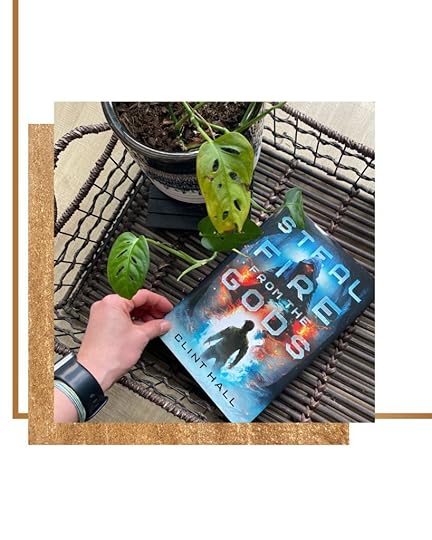
ARCF: While Steal Fire from the Gods is an adult title, you just recently released your YA debut — Echo Nova (congrats!) can you tell us a little about Echo Nova?
CH: Absolutely. Echo Nova is a fun, fast-paced young adult sci-fi novel. The story follows Dash Keane, a high school dropout/rooftop racer who becomes the star of a reality series that sends him on adventures through time.
In this world, time travel has also become a pastime for the wealthy. If you have enough money, you can travel back in time to go on a dinosaur safari, watch gladiators battle in the Colosseum, or attend a feast hosted by Cleopatra.
For everyone else, the past is mainly experienced through broadcasts operated by these corporations. These broadcasts feature people called “timestars” who go on adventures in the past to entertain people in the present.
When Dash becomes a timestar, it’s everything he’s ever wanted. Fame. Fortune. Adventure. But before long, his empathy for the people of the past begins to clash with the desires of his employer. He’s forced to start making tough decisions, choices that might cost him his future.
ARCF: What has been the biggest difference in writing for adult audiences vs young adult audiences?
CH: Great question. The truth is, I don’t think much about my audience when I’m writing a book. When I was writing Steal Fire From The Gods, I wasn’t necessarily thinking of it as adult or young adult, and although the themes are a bit heavier, I feel like that manuscript could have almost gone either way. The same is true for Echo Nova.
I’m sure plenty of very successful authors would strongly disagree with my approach, but I don’t consider a book’s audience until at least the first draft of the manuscript is complete.
I wonder if the bigger difference will be how people react to the book. Telling readers that a book is for adults or young adults impacts their expectations. A few months from now, after I’ve gotten more feedback from people who’ve read the story, I may have a better answer.
ARCF: From Steal Fire from the Gods and Echo Nova, which character would you say is most like you?
CH: I had to think about this question for a while. Dash Keane—the main character in Echo Nova—has a lot of myself in him, but the answer is probably Gunnar Graves, the main character in Steal Fire From The Gods.
While the book is about robots doing magic, it is also a personal story in many ways. It’s about a character who struggles with a crisis of faith. I’ve experienced periods when I could not understand why certain things were happening, and Gunnar’s thoughts, actions, and emotions reflected my own. And as in Gunnar’s story, God brought people alongside me to help me through those dark times.
ARCF: Not only are you an author, but you also have a podcast as well — and juggle everything with a wife, kids, and a day job. What is your best advice for balancing it all?
CH: I’m not organized or process-oriented by nature, but I’ve learned that I have to be that way to do everything I want to do. I’m big on calendars, schedules, and to-do lists. I’ve found that when I block out time for specific tasks, it feels like I have more time to get things done. Of course, that’s not true; what’s happened is that I’m not wasting as much time trying to decide what to do next. Things that get scheduled get done.
Boundaries are also essential and should be created based on your priorities. My wife and I fiercely guard our family time, especially because our boys are still young. We understand that this time is precious right now.
But this might have been the most crucial part for me—I wrote quite a lot before we had kids, before I had a podcast, etc. Echo Nova was written 6 or 7 years ago, before our first son was born. Steal Fire was written before our second son was born. And I have more publishable manuscripts that were also written during those years. I tried to get those books published for a long time, and it was frustrating to keep hitting dead ends. But God’s timing is perfect. He allowed me to build up an extensive catalog of manuscripts so that now, when I have much less available time, I can pull from the work I did before. I’m still writing, but I don’t have to write nearly as fast because it will be a long time before I run out of books.
I only mention that because I imagine some writers are reading this, and I hope that can be encouraging. If you’re in a frustrating period with your writing in which you can’t find the right agent or publisher, keep writing. This may be a long sowing period of your life so that you can reap the benefits later on.

ARCF: What are your writing routines?
CH: For years, I was an early morning writer. I would get up, have coffee, do morning devotional time, pray, journal, and write for a few hours. I’d also grab odd times throughout the day whenever I could. Because Scrivener syncs with my phone, I’d sometimes get a couple hundred words while waiting for a takeout order.
Right now, I’m in a stage of life when that doesn’t work as well for several reasons. I usually write at night after the kids are in bed and the dishes are done.
I’m almost always listening to music, mostly instrumental. I like to have a cup of coffee and a glass of water—pretty standard stuff.
But here’s one interesting piece of my process that might be helpful to other writers. When I’m done writing, I try to keep my mind quiet for a while. Lately, this is usually at night. I’ll get up from my desk and go get ready for bed. I’m always tempted to put in my AirPods and listen to a podcast while I’m brushing my teeth and washing my face, but I try to resist. I don’t want to think about anything.
Here’s why – it seems like my mind keeps working on the story, even when I’m unaware. Quite often, when I’m flossing or climbing into bed, a fantastic idea for the story will suddenly hit me out of nowhere, something that I have to write down immediately. These moments of inspiration are truly amazing, but they seem to only come from a quiet mind. If I distract myself after writing by watching TV or listening to a podcast, they don’t come.
ARCF: What’s coming up next for you?
CH: Nothing to announce yet. Both of my books—Steal Fire From The Gods and Echo Nova—are standalone stories. But without going into spoilers, I can say there is potential for more stories in those worlds.
Many readers have requested another Steal Fire book (maybe the same will happen for Echo Nova; it’s too soon for me to know). While I’m not against the idea, I love how that book ended, and I will only go back to that world if I discover another story that absolutely must be told. The same goes for Echo Nova.
I am having conversations with industry people, and as I mentioned before, I have other manuscripts (as well as pieces for different types of projects). Hopefully, I’ll have something to announce sooner rather than later, but I’m also not in a hurry. God’s timing is perfect.
Save, Pin, Share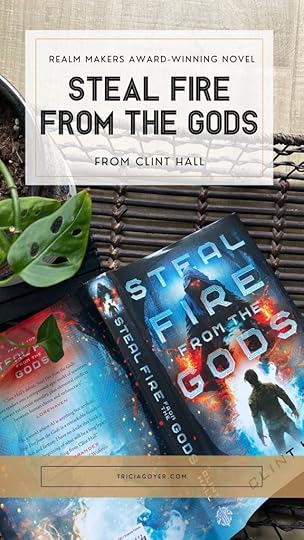

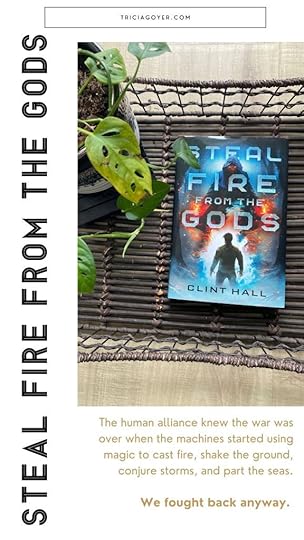 The post Writer’s Desk with Clint Hall appeared first on Tricia Goyer.
The post Writer’s Desk with Clint Hall appeared first on Tricia Goyer.
February 12, 2025
How Homeschooling Changes Over the Years
If there’s one thing I’ve learned after homeschooling for over 30 years, it’s this—homeschooling doesn’t stay the same. And that’s a good thing.

When I first started this journey, I had a house full of little ones running around while I attempted to teach phonics, multiplication tables, and handwriting. At one point, I was homeschooling ten kids at once, juggling lessons, diapers, and meal prep—all while trying to write books and keep some semblance of order in our home. It was exhausting, wonderful, and completely chaotic in the best way.
Fast forward to today, and things look very different. Seven of my children are now thriving adults, each finding their own path in the world. And now, I’m homeschooling just three kids. These days, homeschooling feels quieter, more focused, and, honestly, a little bittersweet. I love watching my children grow, but I also know how quickly the years pass.
Through all the changes, one thing has remained the same—God’s faithfulness. He has led us through each season, equipping us with wisdom, patience, and grace along the way.
If you’re in the trenches of homeschooling young kids, or if you’re adjusting to homeschooling teens, know this—homeschooling will change over the years, and that’s okay. In fact, it’s part of God’s beautiful design for our families.
Here are five ways homeschooling changes as our kids grow—and how we, as homeschool parents, can adapt, encourage growth, and even gain wisdom along the way.
1. The Learning Shifts from Hands-On to IndependentWhen our kids are young, homeschooling often involves a lot of hands-on learning. We sit beside them as they sound out words, work through math problems, and write their first sentences. We guide their hands in science experiments and read aloud for hours. It’s a precious time of bonding and discovery.
But as kids grow, so does their ability to work independently. Older students tackle research projects, take online courses, and dive deeper into subjects of interest. They learn to manage their own schedules and take ownership of their education.
How to Foster Growth:
Provide resources and tools that encourage independent learning.Teach time management skills and allow room for self-directed study.Encourage curiosity and let them explore subjects they are passionate about. "The heart of the discerning acquires knowledge, for the ears of the wise seek it out." —Proverbs 18:152. The Role of the Homeschool Parent Shifts from Teacher to Mentor
"The heart of the discerning acquires knowledge, for the ears of the wise seek it out." —Proverbs 18:152. The Role of the Homeschool Parent Shifts from Teacher to MentorIn the early years, we are the primary teachers—leading lessons, instructing on every subject, and guiding every step. But as our kids grow, our role shifts. We become mentors and facilitators, helping our children learn how to learn rather than just teaching them facts.
By the time our kids reach the high school years, they need us less for direct instruction and more for guidance, encouragement, and discipleship. We help them think critically, navigate choices, and seek God’s wisdom in all they do.
How to Foster Growth:
Have deep discussions about faith, life, and the world.Encourage them to take responsibility for their education and decisions.Remind them that learning isn’t just about academics—it’s about wisdom, character, and faith. "Start children off on the way they should go, and even when they are old they will not turn from it." —Proverbs 22:63. The Homeschool Schedule Becomes More Flexible
"Start children off on the way they should go, and even when they are old they will not turn from it." —Proverbs 22:63. The Homeschool Schedule Becomes More FlexibleWhen all my kids were little, we had a structured homeschool routine—morning circle time, snack breaks, and a pretty predictable daily flow. But as they grew older, I realized that homeschooling didn’t have to look like traditional school.
Now, with three kids left at home, our schedule is much more flexible. Some days are filled with structured lessons, while others are more project-based. Some weeks, we do school in the morning, and other weeks, we adjust based on activities, interests, and family needs. The beauty of homeschooling is that it can evolve to fit our family’s rhythm.
How to Foster Growth:
Be flexible and adjust the schedule based on your children’s learning styles and life circumstances.Prioritize discipleship and real-world learning, not just bookwork.Embrace the freedom that homeschooling allows for different seasons of life. "There is a time for everything, and a season for every activity under the heavens." —Ecclesiastes 3:14. The Conversations Get Deeper
"There is a time for everything, and a season for every activity under the heavens." —Ecclesiastes 3:14. The Conversations Get DeeperWhen my kids were young, our conversations revolved around favorite books, the adventures of the day, and what snack they wanted next. But as they’ve grown, our conversations have changed.
Now, we talk about faith, friendships, future goals, and even the hard questions of life. As homeschool parents, we have a unique opportunity to disciple our children and walk with them through their doubts, dreams, and struggles.
How to Foster Growth:
Make space for conversations—over meals, during car rides, before bed.Be a safe place for them to ask hard questions and wrestle with their faith.Share your own experiences and lessons God has taught you. "Let your conversation be always full of grace, seasoned with salt, so that you may know how to answer everyone." —Colossians 4:65. The Focus Shifts from Teaching to Preparing for Life
"Let your conversation be always full of grace, seasoned with salt, so that you may know how to answer everyone." —Colossians 4:65. The Focus Shifts from Teaching to Preparing for LifeIn the early years, homeschooling is about teaching the basics—reading, writing, and arithmetic. But as our kids grow older, we realize that education is about far more than academics. It’s about preparing them for life.
Our goal isn’t just to raise well-educated kids—it’s to raise disciples of Christ who are prepared for whatever God calls them to do. Whether they go to college, start a business, become missionaries, or work in a trade, our job is to equip them with the skills, wisdom, and faith they need to thrive.
How to Foster Growth:
Teach life skills alongside academics (budgeting, cooking, car maintenance, etc.).Encourage them to seek God’s direction for their future.Pray with them about their dreams, goals, and callings. "Whatever you do, work at it with all your heart, as working for the Lord, not for human masters." —Colossians 3:23Growing Alongside Our Children
"Whatever you do, work at it with all your heart, as working for the Lord, not for human masters." —Colossians 3:23Growing Alongside Our ChildrenAs homeschooling changes over the years, we grow, too. We learn to let go of perfection, embrace each season, and trust God more deeply. We realize that homeschooling isn’t just about educating our children—it’s about shaping hearts, nurturing faith, and building lifelong relationships.
So whether you’re just starting out or you’re adjusting to an emptying homeschool nest, remember this—God is guiding you through each season. Every change, every challenge, and every new stage is an opportunity to lean on Him and watch Him work.
Homeschooling may not stay the same, but His faithfulness never changes.
How has your homeschooling journey changed over the years? I’d love to hear about it in the comments!
Blessings,
Tricia
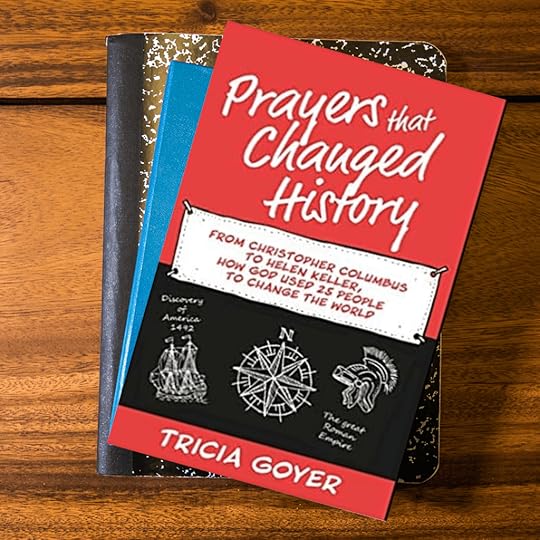
Here are great books for homeschool families!
Wonders of the Ocean RealmPrayers That Changed HistoryHomeschool BasicsCreate a Dynamic Unit Study From Any NovelHope and Refreshment for Homeschooling Parents
Need more ideas and advice on homeschooling? Pick up a copy of Homeschool Basics. Receive tried-and-true homeschool advice from veteran homeschooling moms Tricia Goyer and Kristi Clover. We dish out practical help on getting started and staying the course. Homeschool Basics will remind you that the best homeschooling starts with the heart. Packed with ideas to help you push aside your fears and raise kids who will grow to be life-long learners. Kristi and I believe that homeschooling can transform your life, your home, and your family. Mostly, we believe homeschooling can truly prepare your children for the life God’s called them to live. Don’t let doubts hold you back any longer. Get Homeschool Basics on Amazon Now!
The post How Homeschooling Changes Over the Years appeared first on Tricia Goyer.


